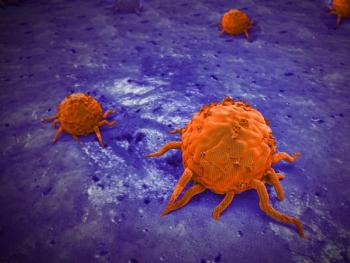
Study of Adherence Interventions in Children with ALL Does Not Meet Primary End Point
The study was evaluating whether a multicomponent intervention, compared with education alone, would result in a higher proportion of patients with ALL who have mercaptopurine adherence rates of 95% or higher.
An analysis of the effect of a daily text messaging and directly supervised therapy intervention on oral mercaptopurine (Purixan) adherence in children with acute lymphoblastic leukemia (ALL), published in JAMA Network Open,did not meet its primary end point of the proportion of patients with adherence rates 95% or higher over the duration of the intervention for all study participants, and for those younger than 12 years versus those aged 12 years and older.
However, the intervention did result in higher adherence rates in patients aged 12 years and older with baseline adherence less than 90%, highlighting a high-risk subpopulation to target for future adherence intervention strategies.
“These findings are similar to those of previous studies in other populations, where patients with poor adherence drew maximum benefit from adherence-enhancing interventions,” the authors noted. “These findings also emphasize the importance of targeting interventions to only those at high risk of poor adherence, ensuring efficient resource utilization.”
In this investigator-initiated, multi-institutional, parallel-group, unblinded, randomized clinical trial, researchers enrolled all patients with ALL diagnosed through 21 years and receiving mercaptopurine for maintenance from 59 Children’s Oncology Group institutions in the US. Patients were randomized 1:1 to education alone or the intervention package, which consisted of education and daily personalized text message reminders to prompt directly supervised therapy. Participants received 4 weeks of baseline adherence monitoring, followed by a 16-week intervention.
Overall, there were 444 evaluable patients, including 230 in the intervention group and 214 in the education group. The proportion of patients with adherence rates of 95% or higher did not differ between the 2 groups (65% vs 59%; odds ratio [OR], 1.33; 95% CI, 1.0-2.0; P = .08).
Exploratory analyses demonstrated that among patients aged 12 years and older, those in the intervention group had higher mean (SE) adherence rates than those in the education group (93.1% [1.1%] vs 90.0% [1.3%]; 95% CI, 0.1%-6.0%; P = .04). Moreover, particularly among patients aged 12 years and older with baseline adherence less than 90%, those in the intervention group had higher mean (SE) adherence rates than those in the education group (83.4% [2.5%] vs 74.6% [3.4%]; 95% CI, 2.2%-15.4%; P = .008).
Importantly, no safety concerns were identified.
“Identifying patients at risk for poor adherence can be a challenge, given that patients at highest risk of poor adherence are most likely to self-report high adherence,” the authors explained. “We have used demographic, behavioral, and mercaptopurine metabolite levels to develop a tool to identify patients at risk for poor adherence and will test this in subsequent studies.”
Moving forward, the investigators suggested future interventions to improve mercaptopurine adherence in children with ALL should target the entire maintenance period and will need additional reinforcements to prevent a decline in adherence. Notably, though the researchers have established the infrastructure for follow-up of patients for disease relapse, this particular cohort was not followed long enough for describing this outcome.
Reference:
Bhatia S, Hageman L, Chen Y, et al. Effect of a Daily Text Messaging and Directly Supervised Therapy Intervention on Oral Mercaptopurine Adherence in Children With Acute Lymphoblastic Leukemia: A randomized clinical trial. JAMA Network Open. doi: 10.1001/jamanetworkopen.2020.14205
Newsletter
Stay up to date on recent advances in the multidisciplinary approach to cancer.




















































































